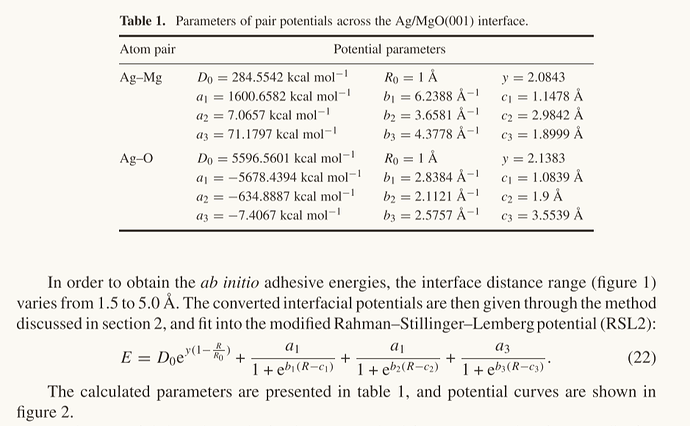I am a LAMMPS beginner and need to set up a model for aluminum (Al) and magnesium oxide (MgO). Through literature review, I found that the interfacial potential used is the modified Rahman–Stillinger–Lemberg (RSL2) potential. However, I’m unsure how to implement this potential in my LAMMPS input script. I heard that the table command can be used to convert it into a tabulated format, but as a self-learner with only two months of experience, I’m confused about the workflow. Could someone guide me through the process? Thank you very much!
The table in your post is for gold and not aluminum.
First, thank you for your response. I understand that this is the interface potential function for Au/MgO. Based on the literature I’ve found, the Rahman-Stillinger-Lemberg (RSL2) potential function can also be used for the Al/MgO interface. My current confusion lies in how to implement this potential function in LAMMPS.
So, then why don’t you show the Al/MgO parameters right away? You have just discredited yourself and given the impression that you don’t know the difference between the two metals.
You just have to follow the documentation like everybody else. There are detailed explanations in the manual.
If you have read through previous discussions here in the forum (as you should) and also checked out the forum guidelines (as you should as well as as you are new here), you should have noticed that a) we strongly discourage learning MD without a sufficiently experienced (local) tutor, and b) none of the people responding to questions here have the time or interest to fill in for such a tutor or wants to see this forum being abused for such personal training purposes.
Note that since the potential is a two-body radial potential you can implement it with pair_style lepton command — LAMMPS documentation.
thank you for your response.
thank you for your guidance.

